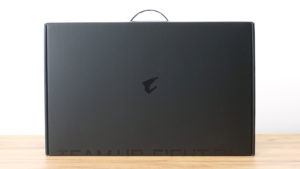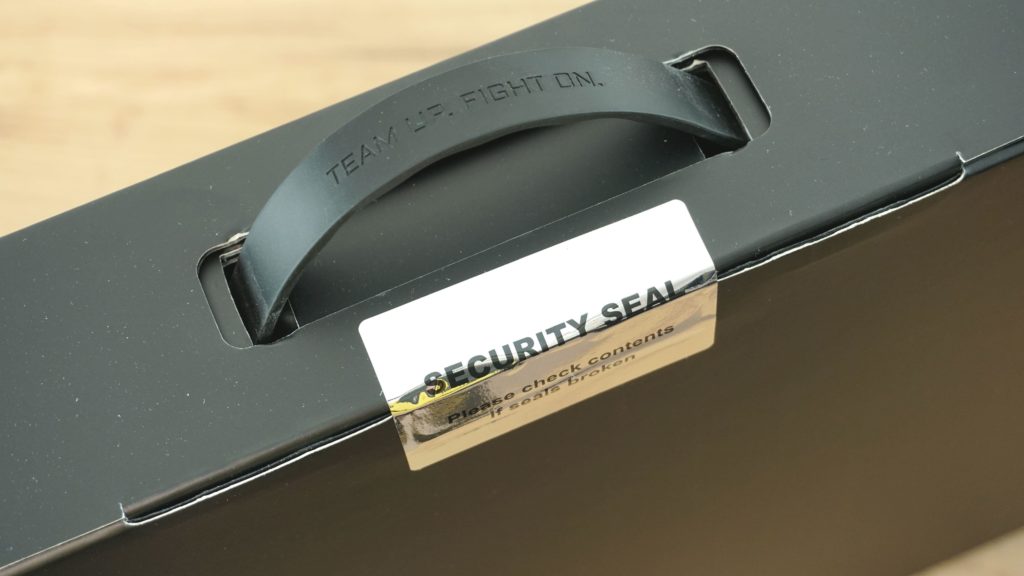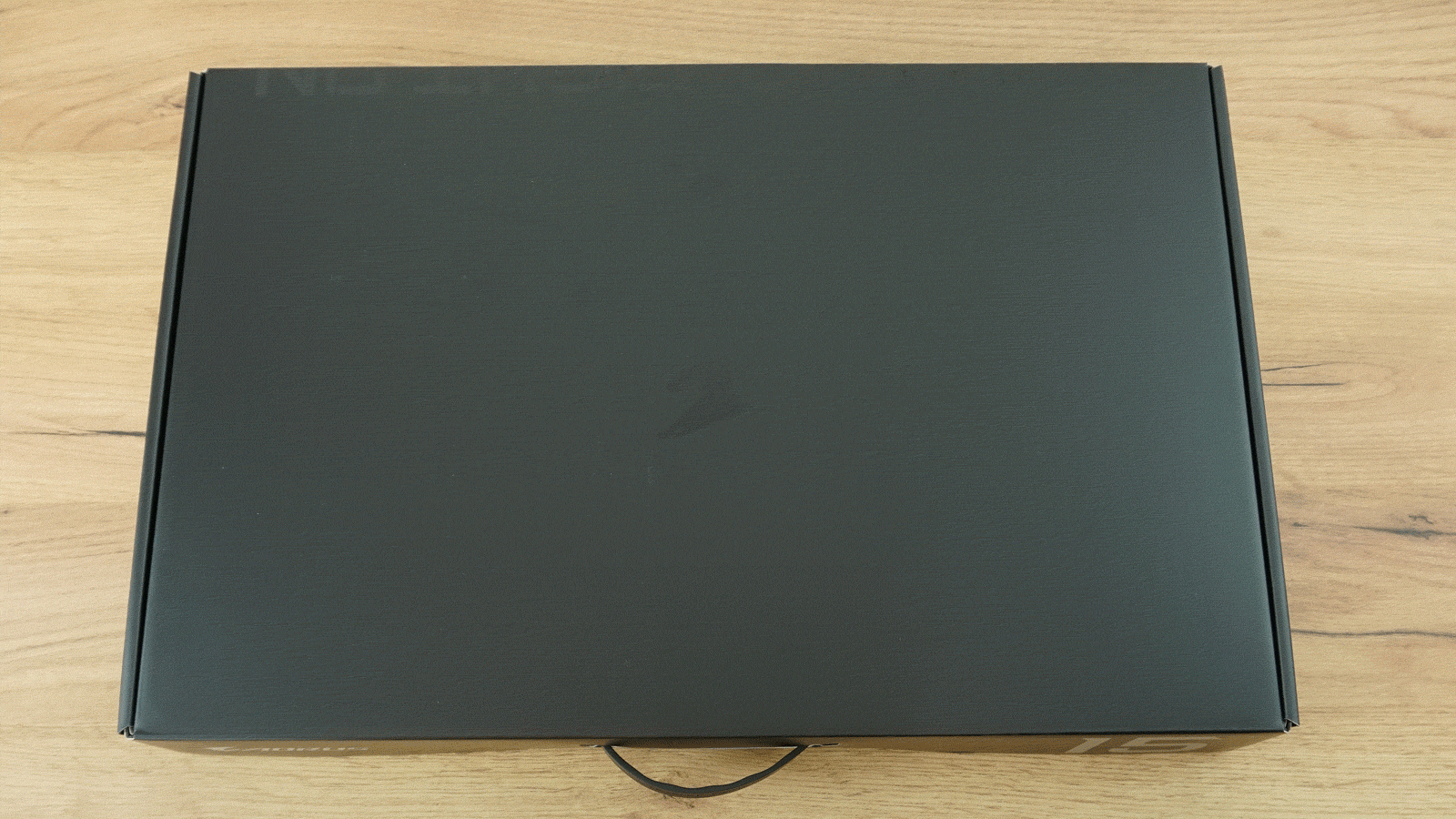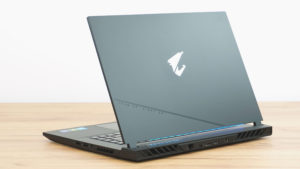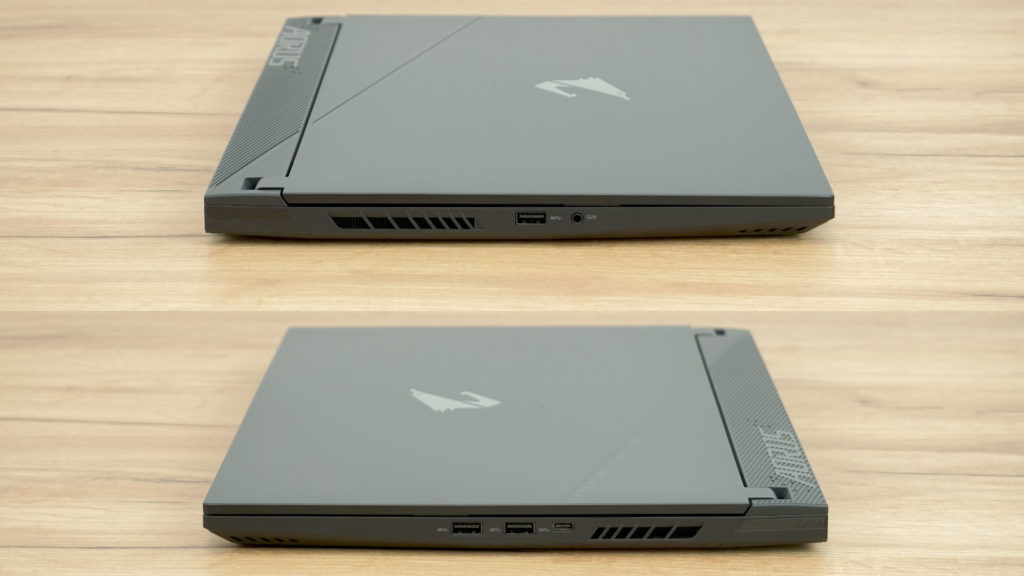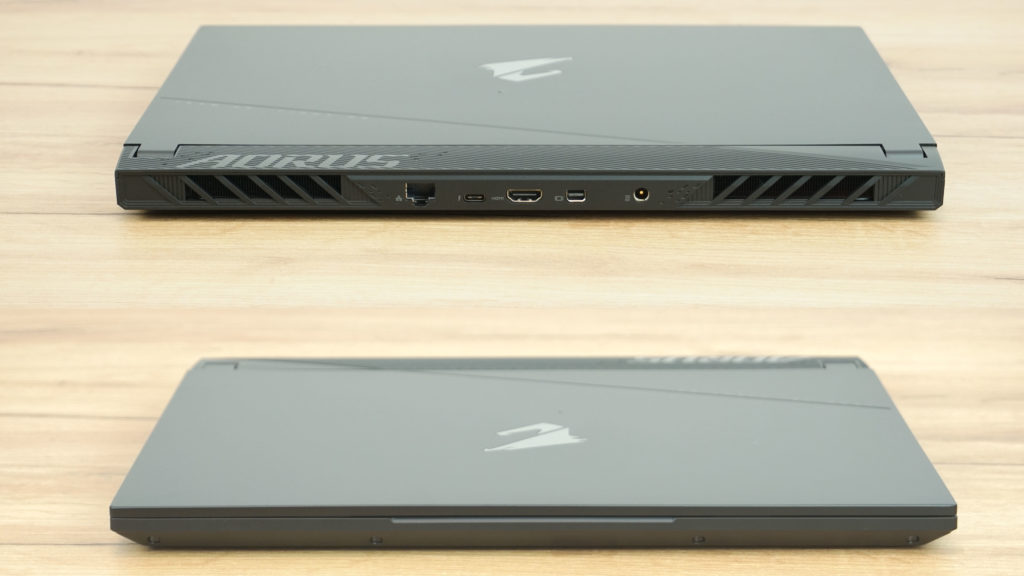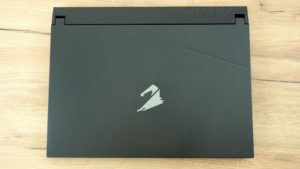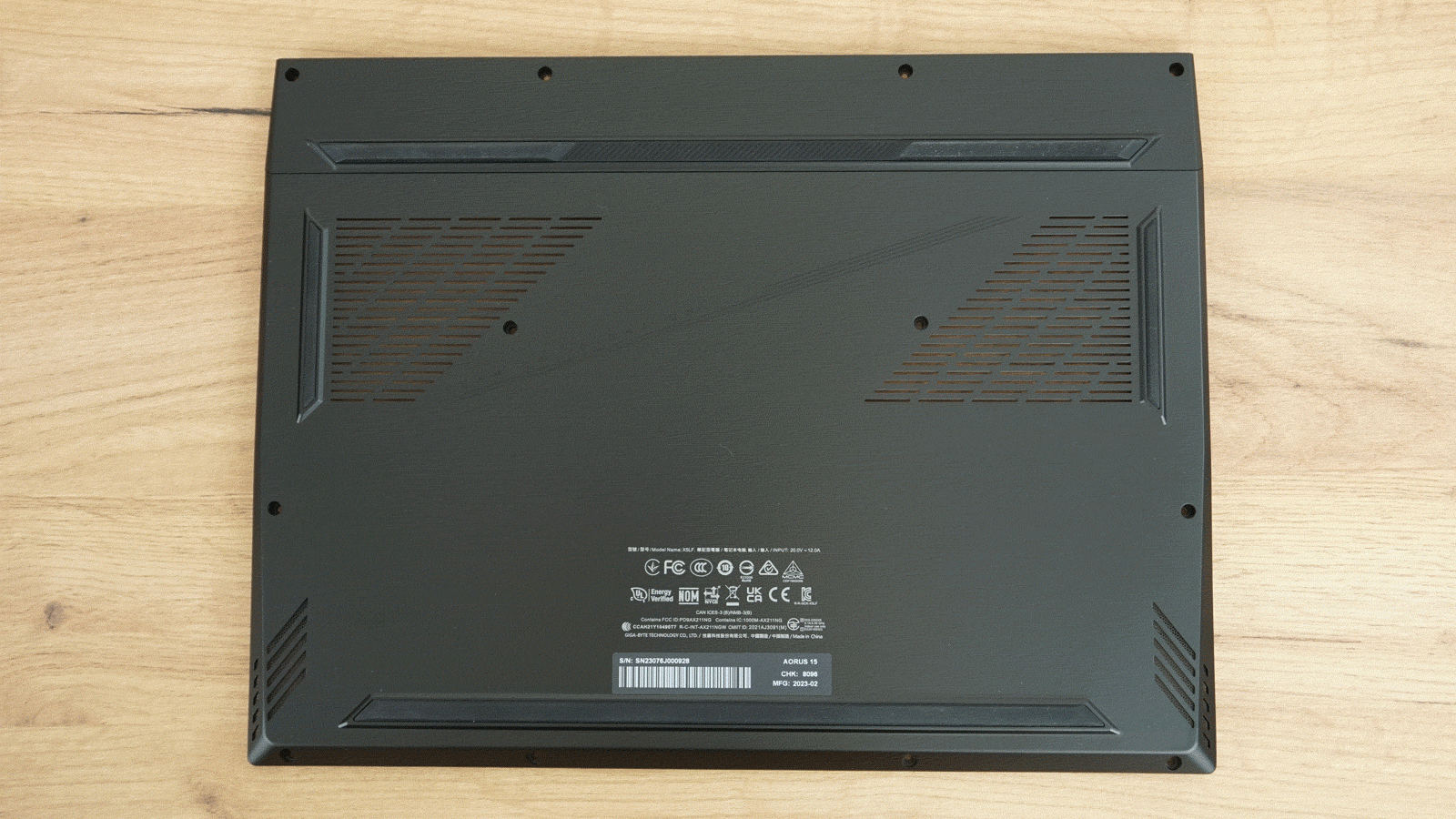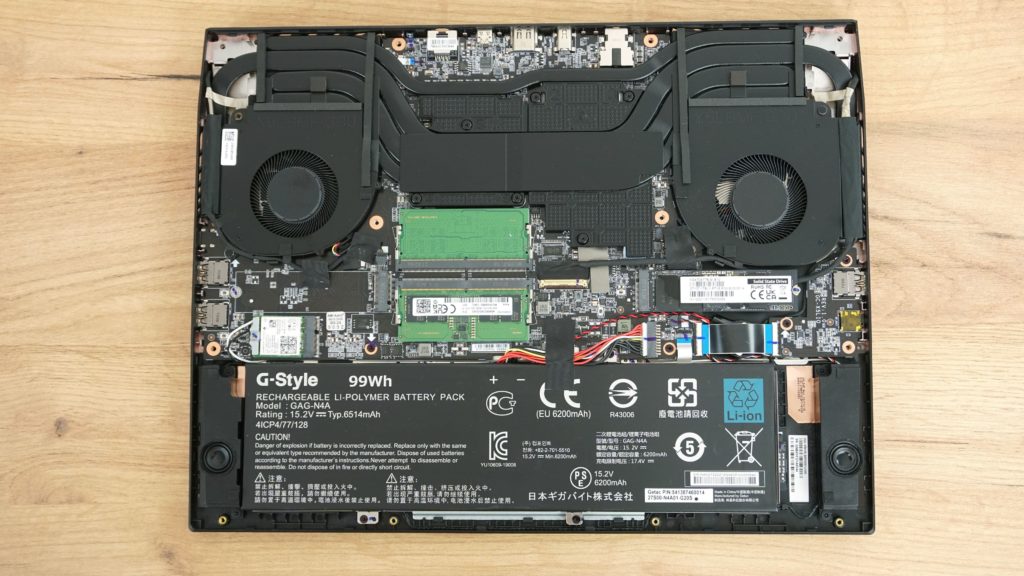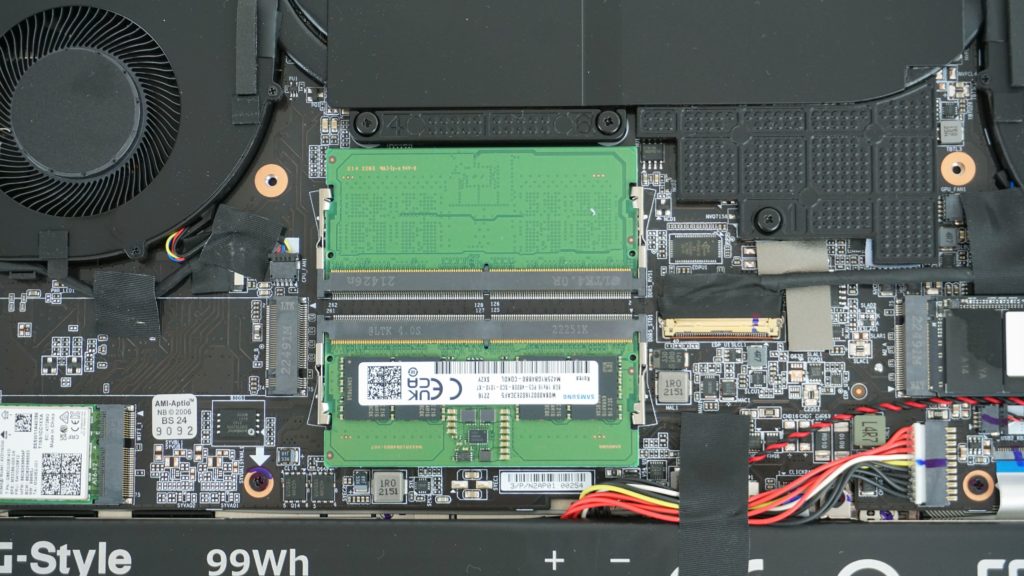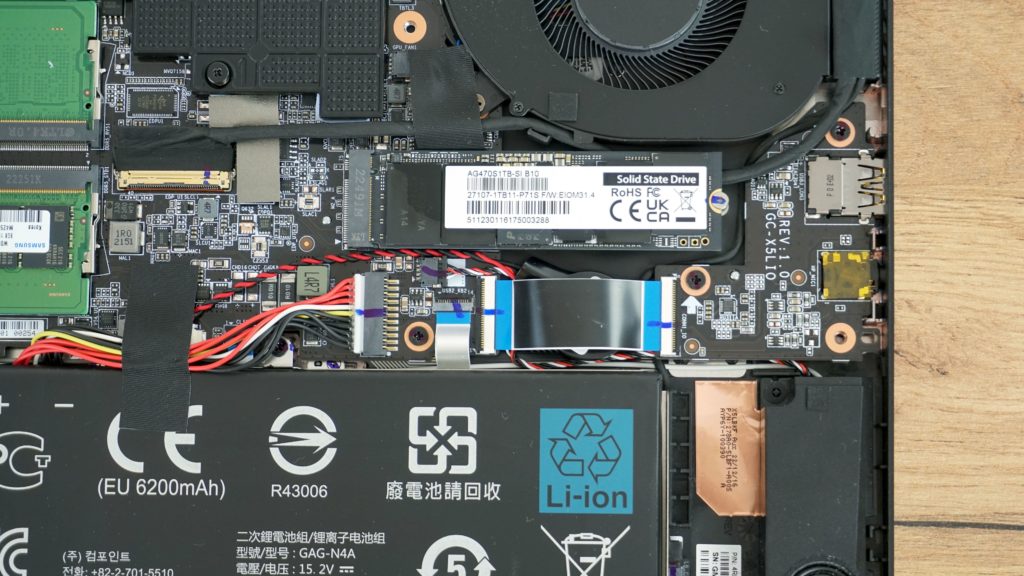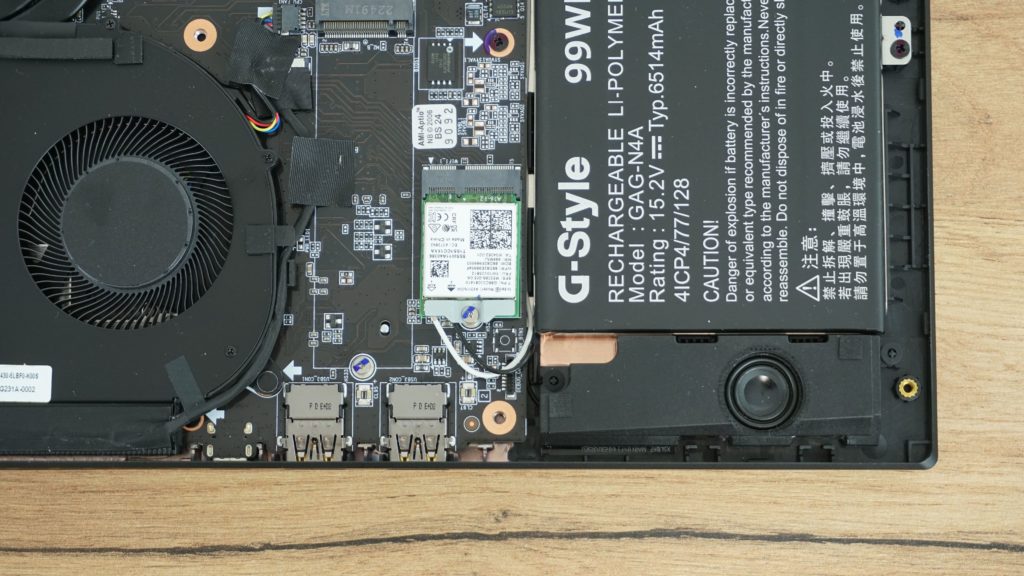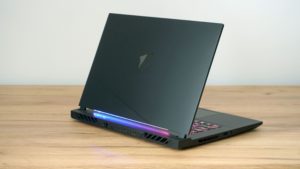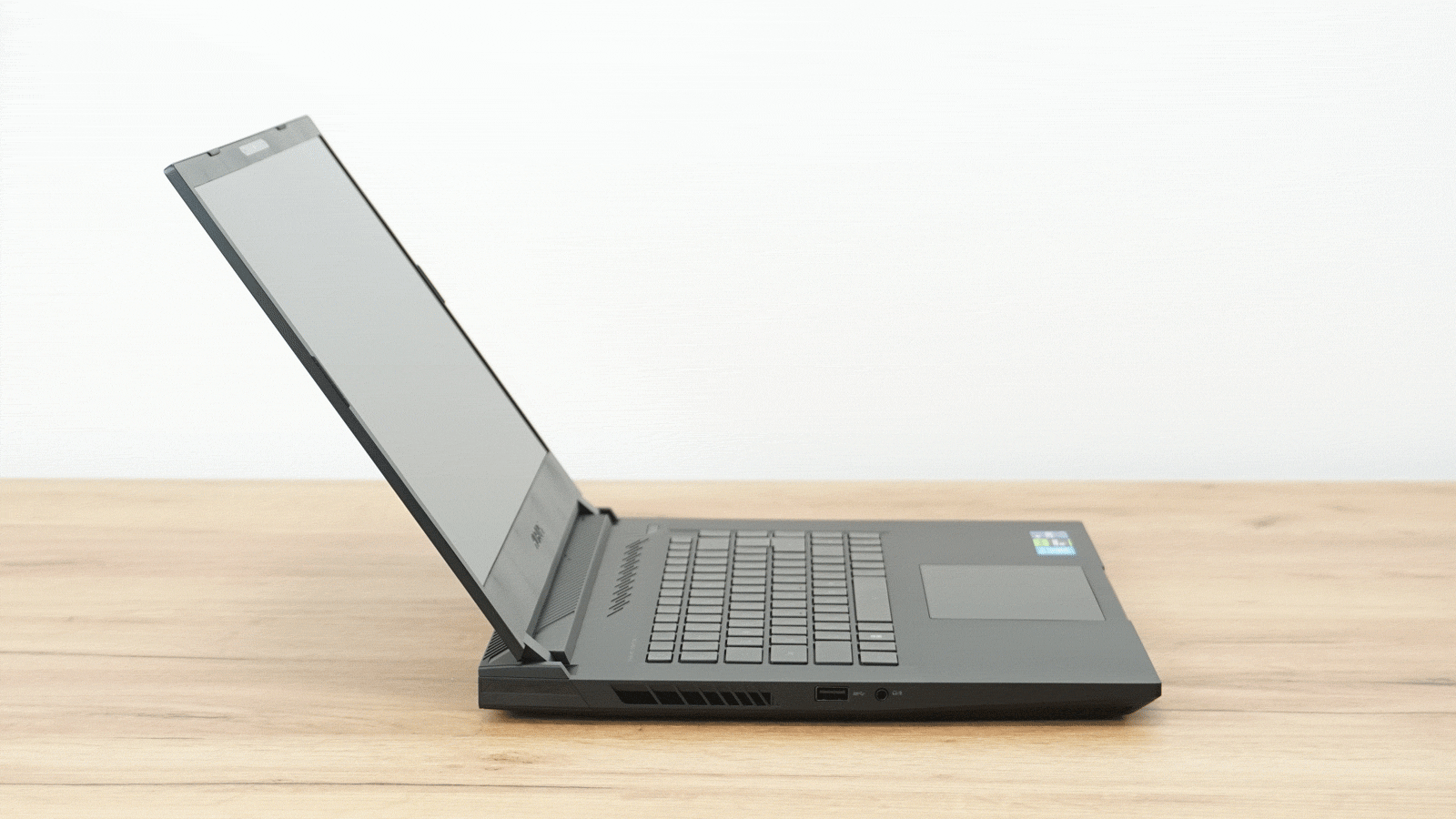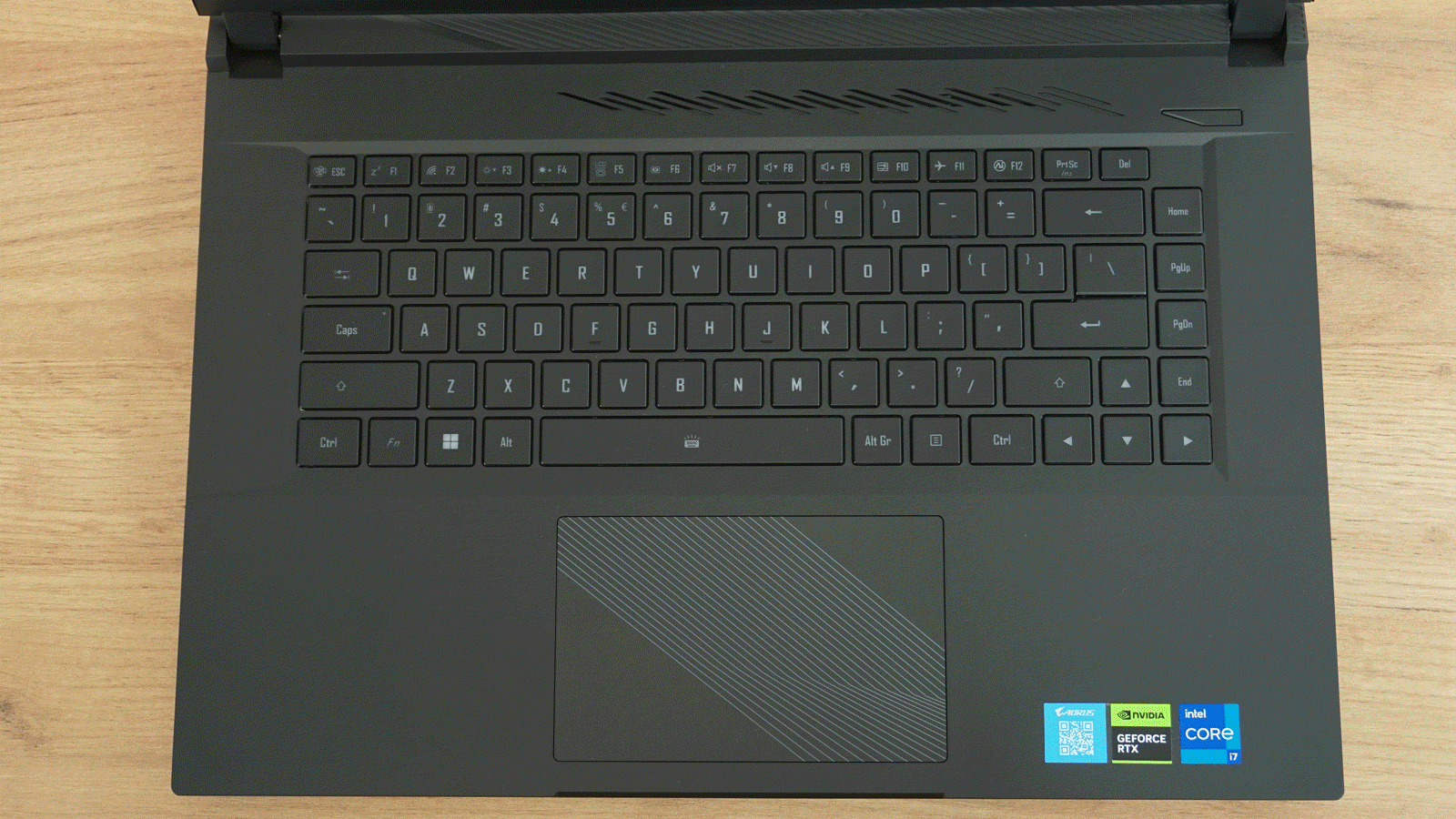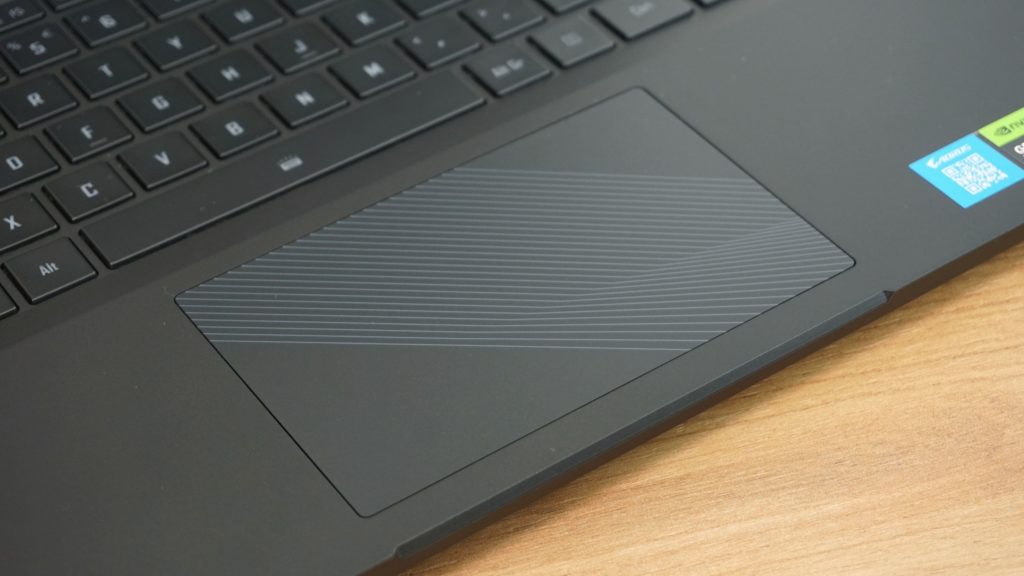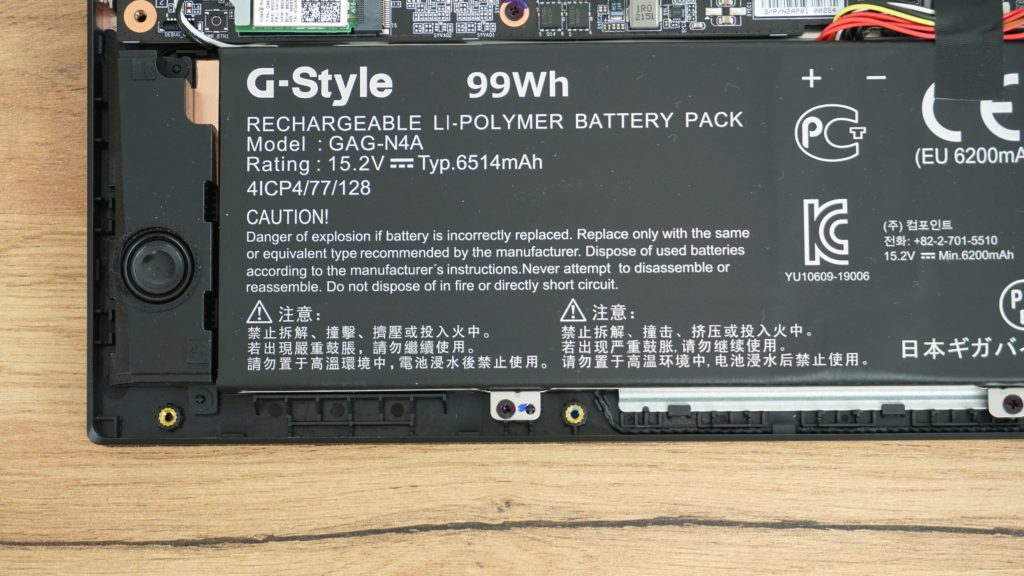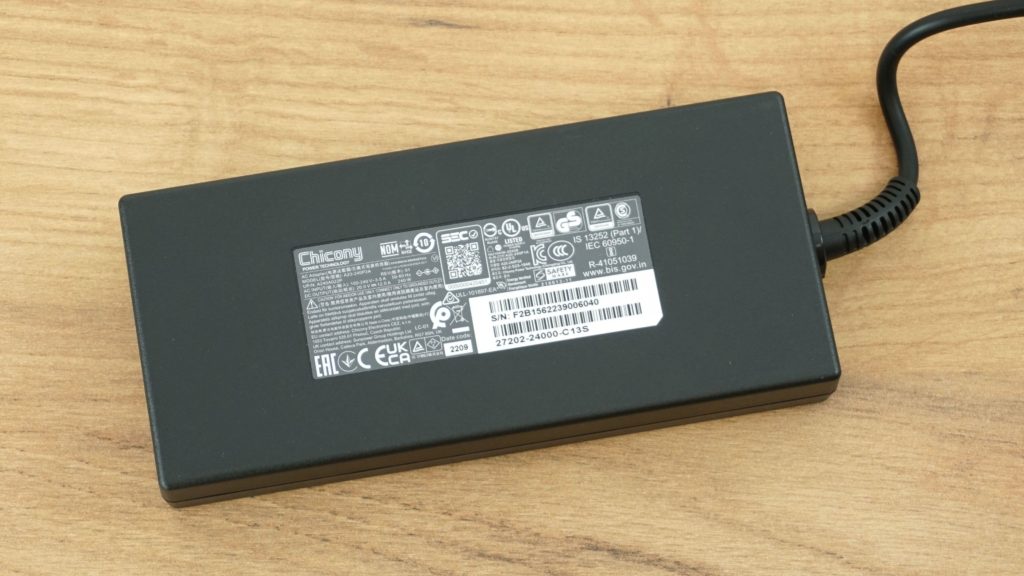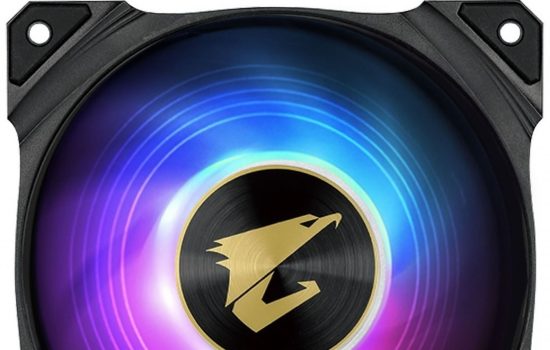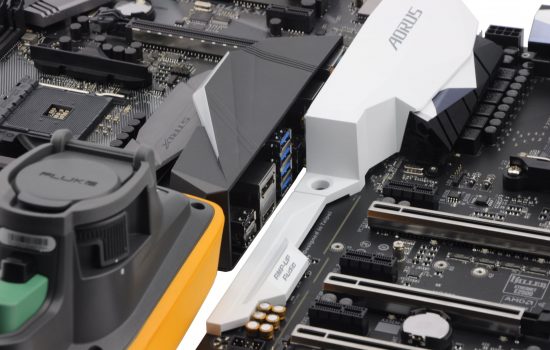Parameters and details
It took longer than I planned, but we finally got our hands on an Aorus gaming laptop. Specifically, the 15-inch model set for 2023 with a Raptor Lake Core i7 processor and an Ada Lovelace RTX 4070 graphics card. This configuration may impress with a rather attractive price. But then again, in the fierce competition from ROG, MSI and Legion models, the Aorus 15 BSF won’t have it so easy.
Basic parameters
| Parameters | Aorus 15 BSF-73EE754SH | |
| Dimensions | 360 × 272 × 20,9 mm | |
| Weight | 2408 g | |
| Display | 15,6", 16:9 QHD 2560 × 1440 px, IPS, 165 Hz, 100 % DCI-P3, matte | |
| Procesor | Intel Core i7-13700H, 14C/20T, 45 W, 7nm | |
| Graphics card | Nvidia GeForce RTX 4070 8 GB GDDR6 (140 W) / Intel UHD 13th gen, integrated | |
| Memory | 16 GB DDR5 SODIMM (4800 MHz), replacable, až 64 GB | |
| Storage | 1× 1 TB SSD M.2 PCIe Gen 4.0 NVMe, 1× M.2 empty | |
| Ports | 1× USB-C Thunderbolt 4, 1× USB 3.2 Gen 2 10 Gb/s type C, 2× USB 3.2 Gen 2 10 Gb/s type A, 1× USB 3.2 Gen 1 5 Gb/s type A, 1× HDMI 2.1, 1× RJ-45 2.5G Ethernet, 1× 3,5mm jack | |
| Battery size | 99 Wh | |
| Camera resolution | 1080p + Windows Hello | |
| Speakers | 2× 2W | |
| Approximate price | 1800 EUR |
Details
The Aorus laptop comes in two packages. The first cardboard box already bears the brand logos and slogans. The inner box then has a less provocative, so-called under the radar, design with a glossy black print on a matte black background.
To open the inner box you have to break the security seal, which means that a brand new piece has arrived in our editorial office, which happens only rarely.
Inside, you’ll find the laptop wrapped in a fabric sleeve and with ample foam padding around it to prevent damage in transit.
The package contains really only the essentials, i.e. the laptop, a power adapter and a short documentation. In this price range, minimal packaging is quite common.
The design of the Aorus 15 for 2023 is conservative to say the least, but in a good way. Don’t look for any design fads or RGB carousels here. Much like the box, the laptop itself carries itself with a stealth style rather than being an eye-popper. Aside from the conservative design, the structure is also surprisingly traditional, with the classic 16:9 display surrounded by fairly large bezels. If you’re looking for a gaming laptop that will fit in at a corporate meeting amongst a sea of Thinkpads and MacBooks, the Aorus 15 will be a good choice.
The new product received the latest hardware from the blue and green team, namely 13th-generation Intel processors and RTX 4000 series graphics cards. Specifically, you have a choice of the Core i7-13700H and the i5-13500H, but in our country I found only models with the i7. The processor is complemented by the RTX 4070 with 8 GB of memory and a maximum power of 140 W. The memory spec is, like the design, conservative with 16 GB of RAM and 1 TB of storage, both of which you can expand on your own. We’ll look at that later, of course. What’s a bit confusing is that there’s also the Aorus 15X, which has a slightly different body and also offers a pair of Core i9s, but still only maxes out with the RTX 4070. And to make matters even more complicated, the manufacturer also offers the Aorus 16, which has the same specs as our tested Aorus 15, but in a more modern body. I couldn’t find that one in our stores, though. The tested configuration is around 1800 EUR, which is significantly less than the competition from ROG, MSI or Legion.
As I mentioned earlier, the Aorus 15 offers a conservative design considering that it is a gaming laptop. It only features a single RGB strip under the display and a few Aorus signs and the typical logo on the display lid. Otherwise, it’s a plain black laptop that doesn’t stand out in any way, which may be an advantage for some. Despite the traditional body and normal display, the scales show a weight figure of 2408 grams, which isn’t low for a 15-inch laptop. We’ll see if the higher weight will have a positive effect on cooling.
Among the strengths of the laptop can be considered the port selection and its layout. On the sides we find only USB ports, namely on the right a pair of 10 Gb USB type As and one 10 Gb type C. On the left is then another “A”, but this time only 5 Gb and next to it there is also a 3.5 audio jack. The rest of the port selection is at the back, where there’s both HDMI 2.1 and mini DisplayPort 1.4, USB-C Thunderbolt 4, a power connector, and last but not least, an RJ-45 Ethernet port for a 2.5 Gb network connection. Perhaps the only thing the connectivity lacks is an SD card reader, which people working with videos and photos would surely appreciate.
The lid of the display shows the manufacturer’s logo, and there’s also the Aorus lettering in the bottom corner, which we’ve already covered. The underside has rubber feet on all sides and a pair of air intake openings.
Removing the bottom cover is fairly easy, however, you will need a torx T6 screwdriver, which makes things slightly more difficult compared to a classic Phillips head screwdriver, but it is nothing unusual among laptops. Disconnecting the cover from the body then goes easily and you don’t have to worry about any RGB cables plugged into the bottom, as we’ve seen with the competition in the past.
After removing the bottom cover, you get to the components. The layout is traditional with a pair of fans at the top, memory slots in the middle and the battery at the bottom.
The Windforce Infinity cooling system features a quintet of heatpipes to dissipate heat from the CPU, GPU and VRAM thanks to a pair of 12V fans with 72 pieces of 0.2mm thin blades. The four heatsinks offer 205 0.15mm thick fins with a total surface area of 107,400mm², a 39% increase over the previous model.
In a not entirely fair comparison, we can say that the Scar 18 with a cooler on the entire back has as many as 414 fins with a thickness of only 0.1 mm and a total area of 195 509 mm², which is roughly twice as much as the tested Aorus 15. Of course, this is a significantly more powerful model with a larger diagonal, but at least for illustration, I found it interesting to compare these numbers.
Let’s move on to the expansion options. In the middle we see a pair of SO-DIMM slots. In our case, they are occupied by a pair of 8 GB DDR5-4800 modules, so there is 16 GB of RAM available. If necessary, you can upgrade up to 64 GB.
On either side of the motherboard, there are M.2 NVMe SSD slots with PCIe ×4.0 support , with one occupied by a custom AG470S1TB-SI B10 drive that’s akin to the Aorus Gen4 7000s SSD.
On the far left is also a WiFi card, specifically the Intel WiFi AX211NGW, which also supports WiFi 6E and can easily be swapped out for a WiFi 7 card in the future when they become available.
As mentioned earlier, the laptop offers only minimal RGB backlighting under the display, which can also be turned off. For some, this can be a big advantage, as gaming laptops tend to look rather comical in work meetings. Not in the case of the Aorus 15.
The lid can only be opened to an obtuse angle, straight opening is not possible due to the cooling design.
The keyboard offers a similar layout to the older pieces tested, such as the ROG Zephyrus M15, the ROG Scar III or the Xiaomi Mi Gaming Laptop. So you’ll find a tenkeyless keyboard with the Home, End and Page Up/Down keys on the right edge. Personally, I’m not a big fan of this layout, as I intuitively look for the enter at the very edge of the keyboard, where there is now the Page Down key. I also prefer the two-line enter of the EN international or CZ/SK layout. However, the laptop came with the US version, where it is bar-shaped, but that is not so unusual and is more a force of habit and personal preference. What’s already strange though is the Delete location and the blank space in the top right corner. One would expect the power button to be there, but it is separately located above the keyboard. As for the keyboard itself, it offers individual key backlighting and an average response, nothing unusual or special, as we can see, for example, with mechanical keyboards in top-notch models.
The large glass touchpad offers gesture controls and a nice surface with good finger tracking. It squeezes well but only in the bottom half, you won’t be able to squeeze it at all in the upper corners and overall impressions are again just good, average.
What’s already above standard for gaming laptops is the Full HD webcam with Windows Hello support. I definitely commend the manufacturer for this, and I would welcome a higher quality camera with biometrics in more gaming models. Bravo Aorus.
The laptop is equipped with a 99 Wh battery, which is the maximum allowed by the legal limit for presence on board an aircraft. The higher weight will be partly due to the battery.
With the laptop you get a 240 W charger weighing 710 grams. So realistically, you’ll be carrying over 3kg in your backpack when you travel, which isn’t too bad. The alternative is charging via the USB-C connector, which is possible, but only up to 100 W. Again, kudos to the manufacturer, we rarely see USB-C charging in gaming laptops, even though Thunderbolt is included in the features.
Charging took exactly an hour and a half, which isn’t bad at all, and the Aorus 15’s speed rivals even models with smaller battery capacities. After 30 minutes the battery showed 51%, after an hour it was already 78%. Battery life in our demanding YouTube test is surprisingly good, with the Aorus 15 clocking in at just over 6 and a half hours with automatic GPU selection (i.e. using the integrated graphics). This is an above-average result for a gaming laptop, but it’s not quite at the top end.
- Contents
- Parameters and details
- Testing methodology
- Display tests
- Rendering and Geekbench
- 3D/PC Mark and Unigine Heaven/Superposition
- Gaming Tests – Dedicated GPU
- Encryption, encoding
- Memory and storage tests
- Temperature and battery life
- Blender – CPU, CUDA and Optix tests
- Performance modes
- Utility App
- Evaluation







